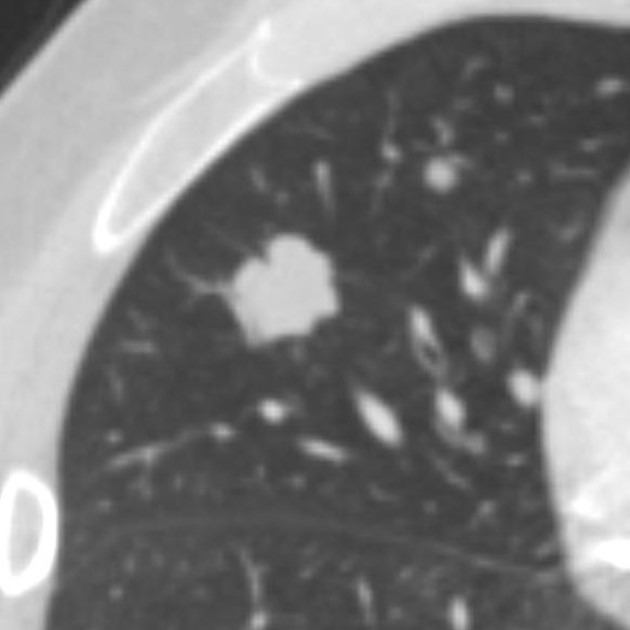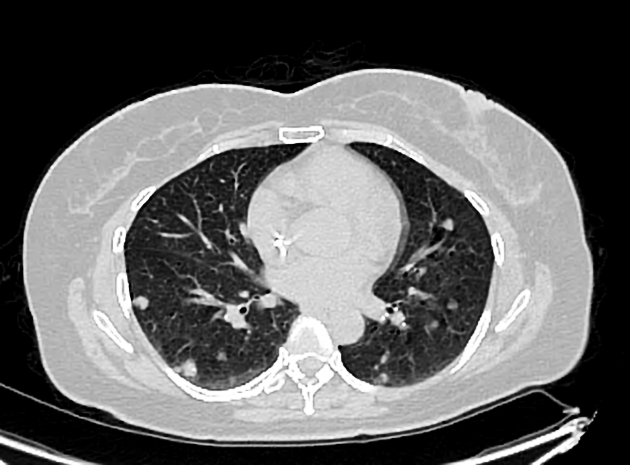Pulmonary epithelioid hemangioendothelioma is a rare vascular tumor of the lung and/or pleura with low malignant potential.
On this page:
Epidemiology
It is a rare tumor, with ~50 cases reported. Patient age at presentation ranges from 25-54 years old, with a female predilection.
Clinical presentation
Pulmonary epithelioid hemangioendothelioma is often asymptomatic and discovered incidentally. It has been associated with chest tightness and shortness of breath.
Pathology
Etiology
The exact etiology of pulmonary epithelioid hemangioendothelioma is unclear. It may occur in male patients, which confuses the usual explanation of a role of estrogen in tumor formation.
Microscopic appearance
Histology shows epithelioid or spindle-shaped cells with abundant eosinophilic cytoplasm. Lumina or vacuoles containing erythrocytes are present. Cells are arranged in nests and cords with degenerated interstitial mucoid.
Radiographic features
Usually discovered incidentally.
CT
-
multiple nodules in the lungs or pleura
bilateral, random distribution
nodules usually 0.3-2.0 cm (although up to 5 cm has been reported)
calcifications are occasionally seen within the nodules
if pleural invasion, then pleural thickening or effusion may occur
Treatment and prognosis
The prognosis of pulmonary epithelioid hemangioendothelioma is unpredictable due to variable estrogen effects on the tumor. Life expectancy has ranged from 1-25 years, depending on presentation and possible resectability of the lesions. If the lesions are unresectable, then chemotherapy is usually used.
Poor prognostic factors
male gender
hemoptysis
asymmetric distribution
pleural effusions
History and etymology
Originally described in 1975 as an "intravascular sclerosing bronchioloalveolar tumor (IVBAT) of the lung".
Differential diagnosis
The imaging differential is wide, including:
primary lung adenocarcinoma with intrapulmonary metastases






 Unable to process the form. Check for errors and try again.
Unable to process the form. Check for errors and try again.